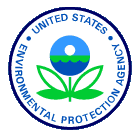|
Mount St. Helens Erupts
|
Volcano-cam 
Volcanic
ash can travel hundreds
to thousands of miles
downwind from a volcano.
Fresh volcanic ash
is gritty, abrasive, sometimes
corrosive,
and always unpleasant.
Although ash is not highly
toxic, it can
trouble infants, the elderly
and those with
respiratory ailments.
In ashy areas, use
dust masks and eye protection.
If you
don't have a dust mask,
use a wet handkerchief.
Small ash particles can
abrade the front
of the eye. The volcanic
gases that pose the greatest
potential
hazard are sulfur dioxide,
carbon dioxide, and hydrogen
fluoride. Volcanic eruptions: preparing and responding |
|
|
|
Highlighted
Program
Great Lakes Collaboration
|
Members of the President's Cabinet, the Great
Lakes Governors, the Great Lakes Congressional
Delegation, Mayors and Tribal Leaders will meet
December 3rd in Chicago to forge an intergovernmental
partnership and develop a coordinated strategy
to further protect and restore the Great Lakes.
The Interagency Task Force, chaired by EPA, is
helping to convene this meeting to establish a long term,
multi-jurisdictional collaboration to address key environmental issues.
More
... |
|
National Lead Poisoning
Prevention Week
October 24-30
This year's theme, "Shut The Door on Lead Poisoning," highlights
the importance of educating parents and children about lead-paint
hazards in housing. Many states and communities plan to offer
free lead screening, and various education and awareness events.
More ... |
en español |
|
|


